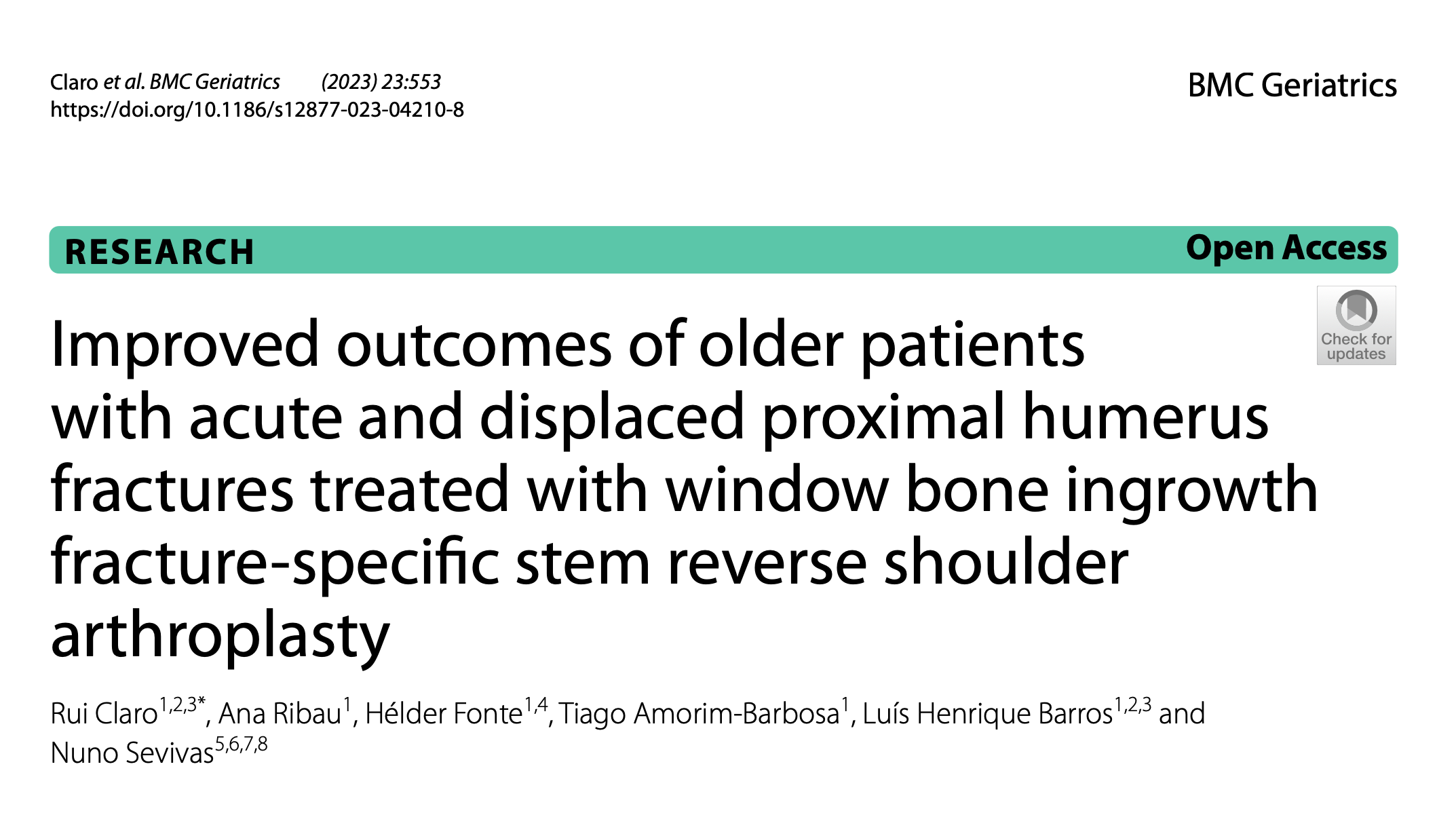Abstract
Background:
The optimal treatment of displaced proximal humerus fractures
(PHFs) in the older people population remains controversial. Reverse
shoulder arthroplasty (RSA) is a popular surgical treatment option that
provides improved and reproducible results. However, the relevance of
fracture-specific stem designs for RSA to improve tuberosity
consolidation and shoulder function remains debatable.
Methods:
This study included all patients 70 years or older with acute and
displaced PHFs primarily treated with RSA at a single institution in
Portugal, between January 2010 and December 2019 who participated in a
minimum follow-up of 2 years.
Results:
A total of 112 patients (15 men and 97 women) with a median
clinical follow-up of 52 months were included. The mean age at the time
of fracture was 78.6 years. All fractures were classified as Neer types 3
and 4 (n = 50 and n = 62, respectively). A window bone ingrowth
fracture-specific stem was used for 86 patients, and a conventional
humeral stem was used for 26 patients. Regarding the tuberosity fixation
technique, 76 tuberosities were attached using technique A (according
to Boileau’s principles), 36 tuberosities were attached using technique B
(not following Boileau’s principles) and 11cases were classified as
technique C (if fixation was not possible). The overall survival rate
during the 2-year follow-up was 88.2%; however, this decreased to 79% at
5 years. Only three patients had complications (two infections and one
dislocation) requiring revision surgery. In the multivariable analysis,
the tuberosity fixation technique (P = 0.012) and tuberosity anatomical
consolidation (P < 0.001) were associated with improved Constant
scores (median Constant Score 62.67 (technique A), 55.32 (technique B),
49.70 (technique C). Fracture-specific humeral implants (P = 0.051), the
tuberosity fixation technique (P = 0.041), tuberosity anatomical
consolidation (P < 0.001), and dementia influenced the achievement of
functional mobility (P = 0.014). Tuberosity anatomic consolidation was
positively associated with bone ingrowth fracture-specific humeral
implants (P < 0.01) and a strong tuberosity fixation technique (P
< 0.01).
Conclusion:
RSA is used for complex and displaced fractures of the proximal
humerus in older patients. Dementia was negatively correlated with
functional outcomes. A window bone ingrowth fracture-specific stem
combined with strong tuberosity fixation can yield better clinical and
radiological results.
Claro R, Ribau A, Fonte H, Amorim-Barbosa T, Barros LH, Sevivas N. Improved outcomes of older patients with acute and displaced proximal humerus fractures treated with window bone ingrowth fracture-specific stem reverse shoulder arthroplasty. BMC Geriatr. 2023 Sep 12;23(1):553. doi: 10.1186/s12877-023-04210-8. PMID: 37700237; PMCID: PMC10498537.


